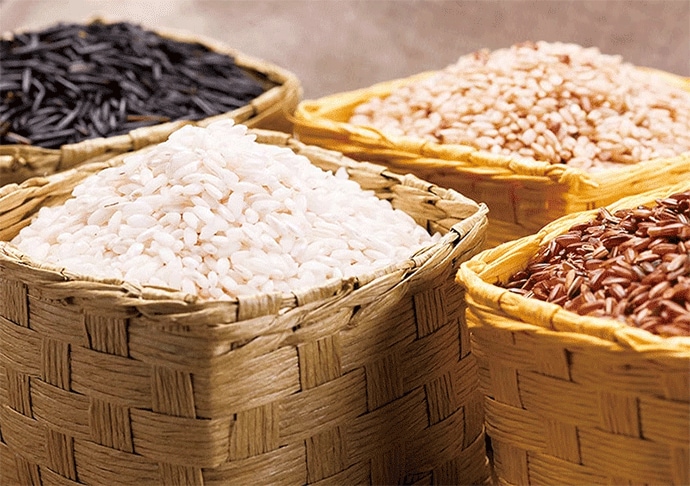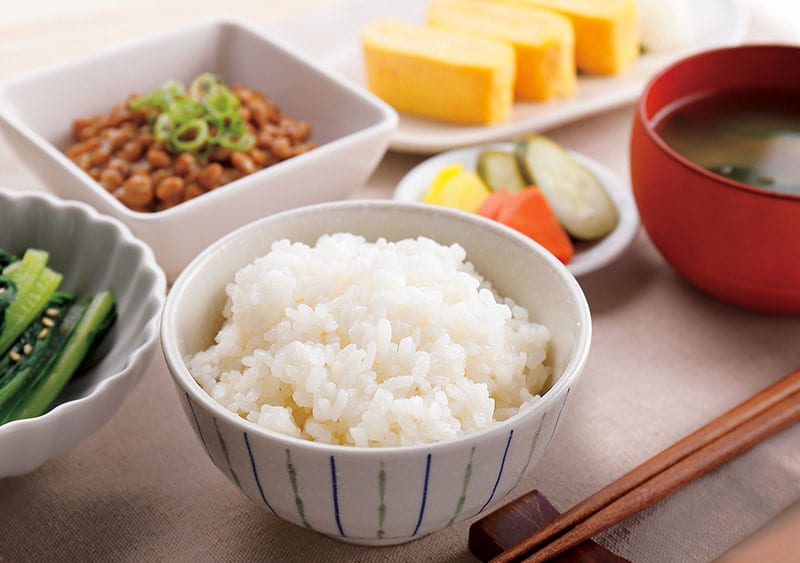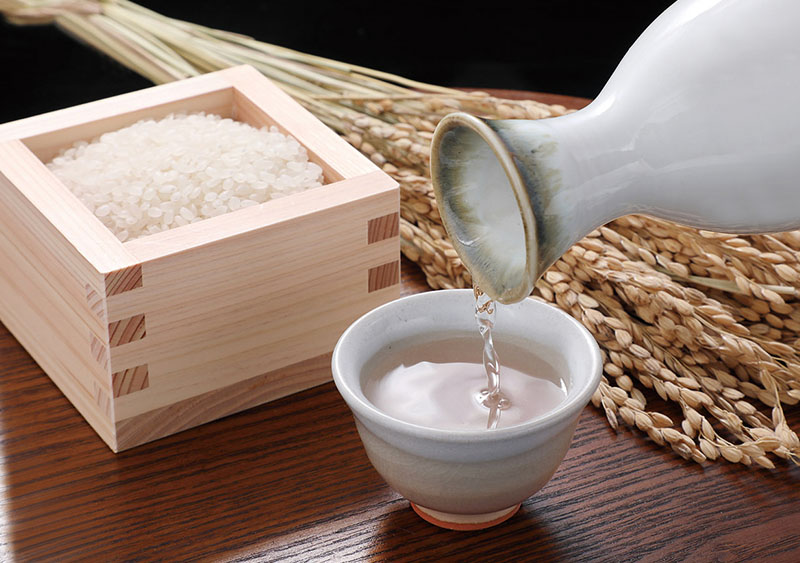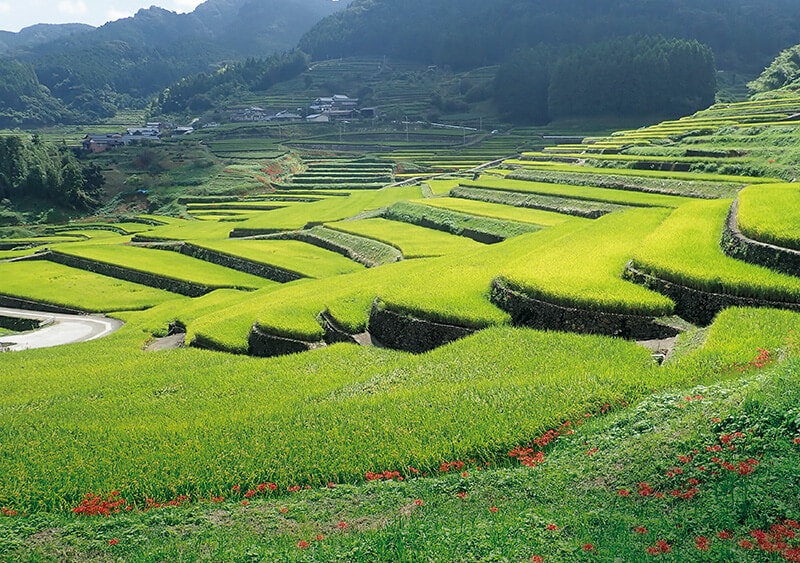
Courtesy of Yo-Ichiro Sato
Agricultural and Societal Roles
Continuing our series on rice, we examine how this grain historically came to dominate Japanese agriculture while transforming the country’s socio-economic framework.
Although it remains unclear when rice was first introduced to Japan, it has been established that wet-rice agriculture—the cultivation of rice in flooded paddies—reached Japan about 3,000 years ago. Rice probably arrived in the Japanese archipelago by several routes, but considering that existing ancient strains are, genetically speaking, fairly homogeneous, it seems that the amount of rice originally brought into Japan was very limited. Around 2,000 years ago, wet paddy rice-growing was practiced widely throughout the islands; not until the sixth century, however, did rice cultivation expand to the point of changing the very nature of society.
Rice as power
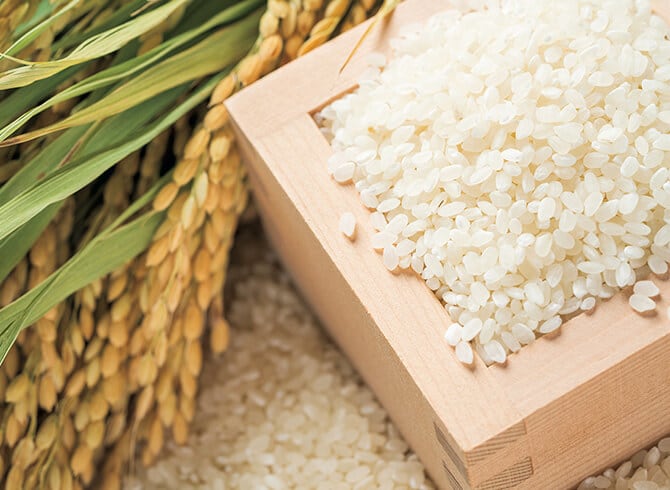
When royal authority became genuinely established in the archipelago around the sixth century, development of the state was founded on rice cultivation. Innumerable workers were ordered to construct great keyhole-shaped tumuli, symbolic of that royal authority, and large-scale paddy expansion was undertaken in order to grow the copious amounts of rice required to feed these workers. Reservoir ponds and irrigation ditches were built on elevated land to irrigate the paddies, while fish living in their waters provided a ready source of protein. The “rice and fish” combination that is fundamental to Japanese washoku cuisine dates from this time.
The ancient state leased paddy fields to farmers and collected a portion of harvested rice as tax. However, as the population increased and soil quality deteriorated from continuous cultivation, the rice supply from state-held lands could not keep up with demand, and additional land had to be reclaimed for new fields. Rice cultivation shifted into private hands, as the state came to rely on the power of noble families to develop these new fields. This led to the formation in the Heian period (794-1185) of privatized estates known as shoen—land owned by powerful members of the elite that was farmed by peasants.
By the time the warrior class began to accumulate power in the thirteenth century, a wide range of technological developments, including the deliberate selection of rice strains, had advanced. Warriors fought to gain control of rice-producing domains, their rivalries eventually intensifying into civil wars that raged throughout the country from the late fifteenth through sixteenth centuries. During this era, rice gradually acquired the status of a “battle resource,” as myriad strategies were developed to increase rice production of one’s own domain, and decrease that of rivals.
Cultivation technologies
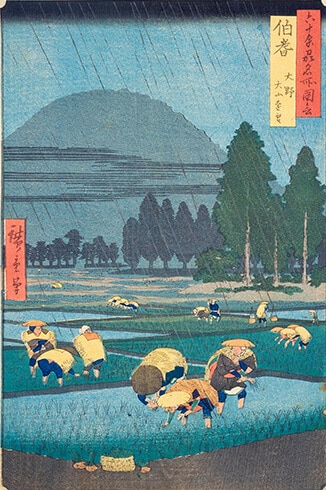
Courtesy of National Diet Library Digital Collections
It is often said that the Japanese archipelago is well-suited to rice cultivation because of its climate of high temperatures and humidity, but this is not necessarily so. Some areas suffered from a lack of water; others were beset by flooding. Land was made suitable for rice farming through centuries of hard labor in building reservoirs, irrigation canals, levees and other engineering works, thus improving water distribution systems and adapting practices to local ecologies—including selecting rice strains which correspond to specific characteristics of the land. Engineering works led to advancements in surveying techniques, stone wall-building, and in the mathematics that underpins these technologies. During the Edo period (1603-1867), Japan was known for its high literacy rate, and it is noteworthy that this higher level of learning in society as a whole was partly the result of efforts to advance the technologies of rice cultivation.
The high productivity of land achieved by technological advancements during the Edo period formed the unique Japanese landscape of mountains and cultivated fields; the forest and mountains surrounding farm villages are called satoyama. Farmers in villages obtained fertilizer, food, fuel and lumber from satoyama, integrating agriculture, lifestyle and nature through coexistence, thus establishing sustainable lifestyles. Designated as tax, rice became the foundation of the economy of the domains; research in agricultural technologies was therefore encouraged in many domains, with benefits accrued to those families farming the land. Such research has been preserved in collective agrarian technology reference books known as nosho, which chronicle the names of many rice strains and explain suitable soils for each strain in detail, by region.
Rice as foundation
During the Meiji era (1868-1912), rice again assumed its role as a “battle resource.” In wars waged with China and Russia, massive quantities of rice were transported to the respective fronts to feed troops. Further improvements in strains and cultivation were made, and these efforts later became state-sponsored. There was also tremendous enthusiasm towards improving rice cultivars during this particularly patriotic era. Rice shortages eventually caused the price of rice to skyrocket, fueling rice riots (kome sodo) in various parts of the country. The largest such protests in Japanese history erupted in 1918, when rice became the target of market speculation.
Rice shortages continued until the end of the Second World War. Subsequently, rice production increased, and shortages were resolved in the 1960s. This was the moment when, for the first time, the long-coveted rice diet could be claimed as standard for all Japanese. Ironically, from this time, the consumption of rice fell sharply and Japan entered an era of rice surplus. Rice consumption, which stood at 118 kilograms annually per capita in 1962, has since fallen to a little over 50 kilograms in 2020.
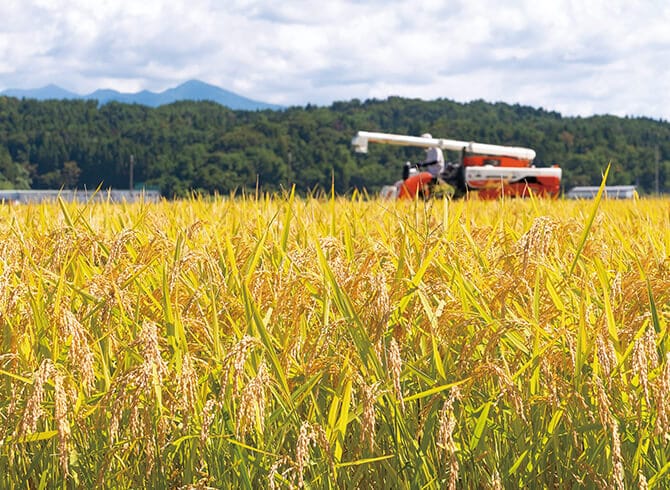
For over two thousand years, rice played a leading role as the foundation of this country’s state power, as a currency in its economy, and as a vital resource in the waging of war. In the future, rice is anticipated to play a new role in making unique contributions toward the preservation of Japan’s landscape, traditions and food culture. Our next installment will explore the essential role of rice in Japanese cuisine.

